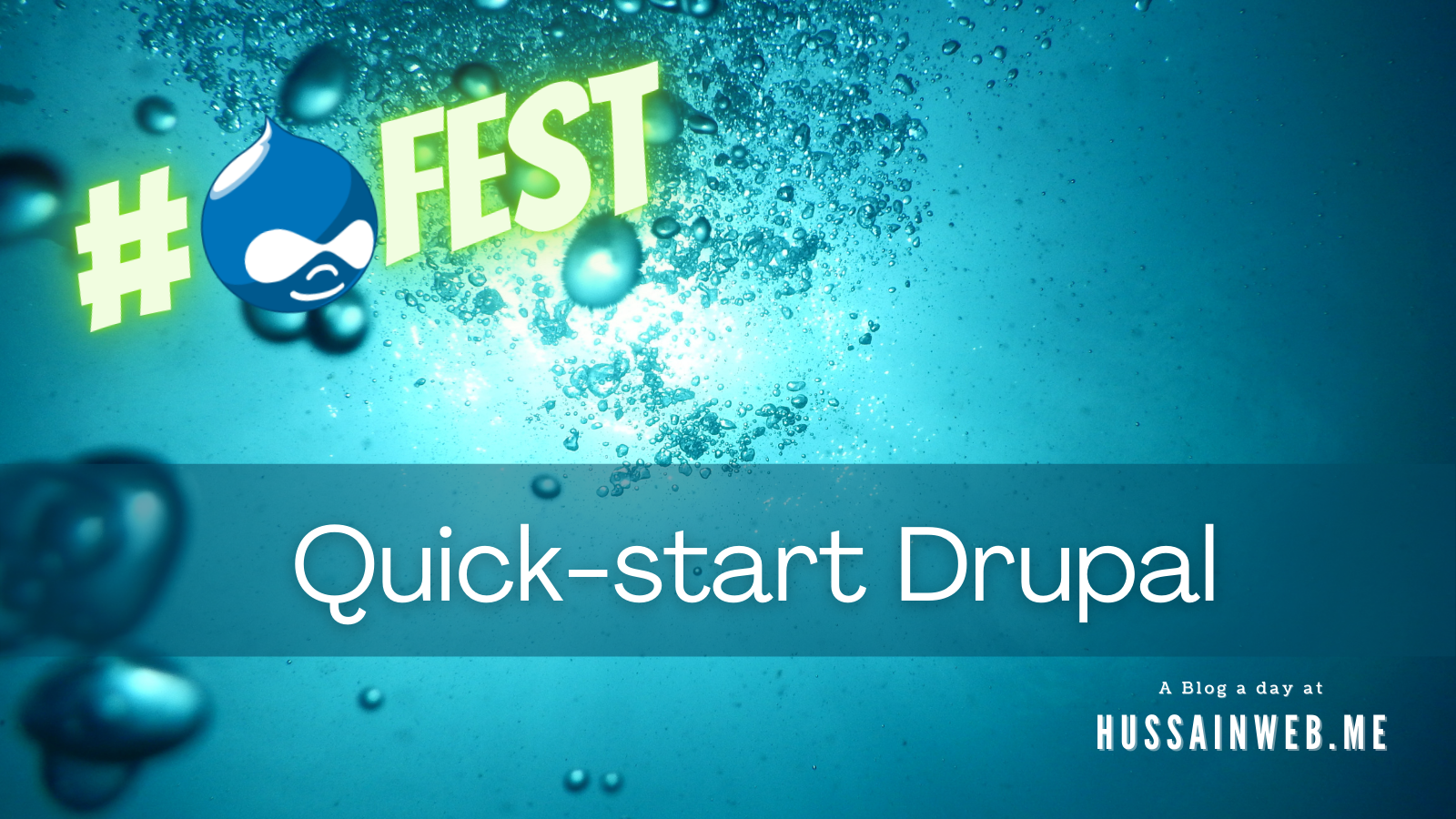This post will cover quickly setting up a Drupal website for testing, experimentation, or evaluating features on your local system. While I cover a different set of options briefly, I will mainly talk about a tool we have built to let us quickly scaffold Drupal sites with best practices built in. This post is a part of the DrupalFest series which celebrates 20 years of Drupal. Let’s get started.
Before I go to the main part of the article, let us look at what options do you have to quickly set up a Drupal website for evaluation. While all the ways are effective, there are trade-offs typical of each method. We’ll start with the simplest way to experiment with a Drupal site and then keep going up the level of complexity, but also the flexibility you get.
Someone else’s machine
The easiest way to set up a Drupal site is in the Cloud, aka, someone else’s machine. Broadly, there are two ways I can think of to do this. The first method involves one of the excellent Drupal hosting providers and signing up for a free account. Drupal.org lists some of the hosting supporters who offer a free account to try out Drupal. Go to this link to get started: https://www.drupal.org/try-drupal.
While the above method lets you try out not just Drupal but also a hosting platform where you might actually run your website, you may not want to create an account to just try out Drupal. In that case, there is SimplyTest.me. This site provides a time-bound sandbox environment where you can quickly try out Drupal, one of the Drupal distributions, with or without modules and themes, and even apply patches. The sandboxes are available for 24 hours and give you complete control of the Drupal site through the UI. You don’t get command-line or SSH access this way, but for quickly testing out a module or a distribution, this is the easiest solution out there. You don’t need an account. Just pick the modules or the distribution and you have a sandbox ready in moments.
Your machine
On your machine, you have a little bit more control over the site but you do need the software required to run Drupal. If you’re only interested in quickly evaluating Drupal on your machine and still have access to the files and command line, the Drupal evaluator guide gives you an option to run this with just PHP. More details and instructions are available at the link: https://www.drupal.org/docs/official_docs/en/_evaluator_guide.html.
The problem with the above method is that it won’t run Drupal in an environment reasonably similar to where you would host. This is good for evaluating Drupal and quickly editing a few files but the experience working with PHP built-in server and SQLite would not help development. To take it a step further, you would need Docker as a pre-requisite.
If you have Docker and you already have a Drupal codebase downloaded, then tools such as Lando and DDEV would help you get started in no time at all. If you want to take it a step further, keep reading to the next section.
Finally, you have the classic method of installing Drupal on your machine by manually installing all the software required to run Drupal (that’s PHP, Apache/nginx, MySQL/MariaDB, etc). I don’t find many developers do this anymore and it is more trouble than it is worth. If you can’t run Docker for any reason, consider running it in a virtual machine using the excellent DrupalVM.
Axelerant’s template tool
Now to the main section of the post. At Axelerant, we wanted to automate the entire process of setting up a Drupal site quickly along with the codebase, Lando configuration, some of the best practices we follow, and even CI configuration. I wrote a tool for that called axl-template which is available via pip (yes, it’s written in Python and needs at least Python 3.6). Once the tool is installed, you can quickly set up a Drupal site along with all the configuration I mentioned in a matter of minutes. I have measured this time from running the first command to have Drupal running to be minutes (longest time taken by Drupal installation). Here’s a somewhat old video where I use this tool to set up Drupal 9 with Lando.
I have added new features to this tool since I made the video, the most notable feature being able to specify modules and packages right in the first command. The idea is to have your codebase created from a single command and ready to run. I am planning to create a new video to cover these and many other features added to the tool. For now, the documentation is a good reference. Read more at https://github.com/axelerant/axl-template.
If you’re averse to installing a Python package through pip and don’t want to get it from the source code either, you could run it via Docker using whalebrew. Instructions to do these are in the README file but only one of the commands is supported in this way.
We’re continuing to improve this tool by adding support for more common development tools that are typically used. One example that comes to my mind right now is Acquia’s BLT. I can’t promise when that support will come out but it’s on the cards. In any case, this package is released under MIT license and contributions are very welcome.
This is it for today and I am just completing this post with less than four minutes to spare to midnight. Have a good DrupalFest everyone.
